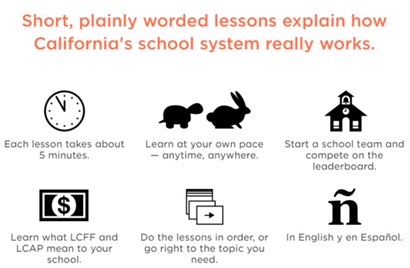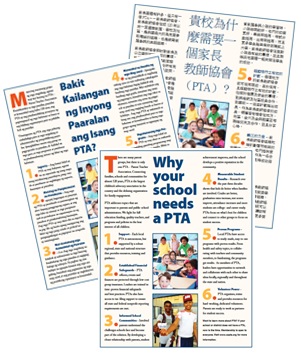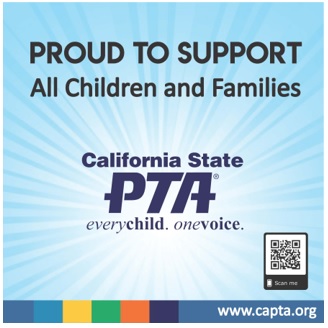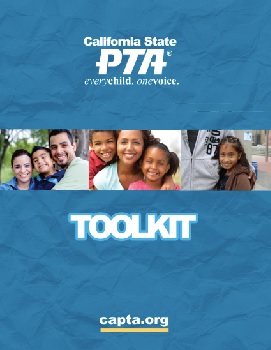Bylaws are designed to help your PTA function in an orderly manner. PTA bylaws describe the purpose of PTA and its mission, and members’ rights, in addition to officers, committees and their respective duties.
A copy of the association’s Bylaws for the Local PTA/PTSA Units must be made available to any association member upon request. A copy should be provided to all officers and board members. Each executive board member is responsible for making a thorough study of them.
Visit the Leaders’ Website for additional information on the essential role of bylaws
Visit the Leaders Website
REVIEWING AND UPDATING BYLAWS
Bylaws should be reviewed annually, and updated every five (5) years by the bylaws committee of the association, chaired by the parliamentarian. The procedures and instructions to complete the bylaws are found inside the front cover of each set of bylaws.
When the National PTA or California State PTA approves changes to the standard bylaws for local PTA/PTSA units, the change is effective for all PTAs/PTSAs whether the printed copy being used by your PTA includes that change or not.
Note: Any change in the association’s bylaws, including the number of officers, positions, or membership dues amounts may not be implemented until bylaws have been submitted through channels (council and district PTAs) to the California State PTA parliamentarian for approval.
This means that your PTA must continue to charge the stated dues amount, elect the stated officers, and hold meetings as provided for in your most current set of bylaws signed by the California State PTA parliamentarian. Simply adopting the amendments at an association meeting without prior state approval is not sufficient.
Most bylaws are processed by the state parliamentarian within two weeks of receipt unless additional information is required. Bylaws submitted for review should be returned to you through channels within 6-8 weeks of the original submission date. If you have not received the bylaws back within this time frame, contact your council or district parliamentarian immediately. If you need additional assistance, contact your council or district president or contact the State Parliamentarian at parliamentarian@capta.org.
STANDING RULES VS. BYLAWS
Standing rules outline the procedures of the organization that are not included in the bylaws and must not conflict with the bylaws or the California State PTA Toolkit. They may be changed or amended without notice with a two-thirds (2/3rd) majority vote of the association, or a majority vote with thirty (30) days’ notice.
Some of the differences between standing rules and bylaws are:
- Bylaws state when the meetings of the association are held.
- Standing rules tell where and what time association meetings are held, and when executive board meetings are held.
- Bylaws give the primary responsibilities of officers and chairmen.
- Standing rules give the specifics.
If the bylaws state that the first vice president is responsible for programs, the standing rules would list the various special committee chairmen who work under that vice president, such as Founders Day, Honorary Service Awards, etc. The bylaws describe the authority of committees. Standing rules indicate which committees are standing committees whose chairmen are voting members of the executive board and which committees are special committees, whose chairmen do not have executive board voting privileges and to which executive board member they report.
If the organization has supplies or equipment, the standing rules would state who is responsible for them and where they would be kept. They might also list details of the installation of officers, and who has responsibility for securing the past president’s pin.
Visit the Leaders’ Website for additional information on Standing Rules
Visit the Leaders Website


 Lourdes Beleche is all about the kids.
Lourdes Beleche is all about the kids. One of the wonderful benefits of belonging to PTA is the support system it offers.
One of the wonderful benefits of belonging to PTA is the support system it offers.  Recruiting men as PTA members may mean rethinking how your PTA is run on a day-to-day basis. If your PTA mostly relies on female caregivers, reaching out to men may involve breaking down barriers and trying new approaches and strategies:
Recruiting men as PTA members may mean rethinking how your PTA is run on a day-to-day basis. If your PTA mostly relies on female caregivers, reaching out to men may involve breaking down barriers and trying new approaches and strategies:

 Research shows that learning arts subjects alongside math, history, science and English has an exponential effect on student success. For example, students who have an arts education achieve more A grades (in all subjects), have better attendance, are more likely to graduate from high school, and have better critical thinking, collaboration and social-emotional skills than those who don’t. This is especially true for English language learners and students from low-income backgrounds.
Research shows that learning arts subjects alongside math, history, science and English has an exponential effect on student success. For example, students who have an arts education achieve more A grades (in all subjects), have better attendance, are more likely to graduate from high school, and have better critical thinking, collaboration and social-emotional skills than those who don’t. This is especially true for English language learners and students from low-income backgrounds. Looking for new ideas to increase PTA membership at your school? How about ways to engage students or teachers in PTA? Check out these great ideas and resources:
Looking for new ideas to increase PTA membership at your school? How about ways to engage students or teachers in PTA? Check out these great ideas and resources:
 National PTA’s
National PTA’s  Presenting a polished and professional image is important in building membership for your PTA. The PTA Store offers great marketing materials to help you promote your PTA, including a new design featuring California State PTA’s message “Connecting Families, Schools and Communities.”
Presenting a polished and professional image is important in building membership for your PTA. The PTA Store offers great marketing materials to help you promote your PTA, including a new design featuring California State PTA’s message “Connecting Families, Schools and Communities.”